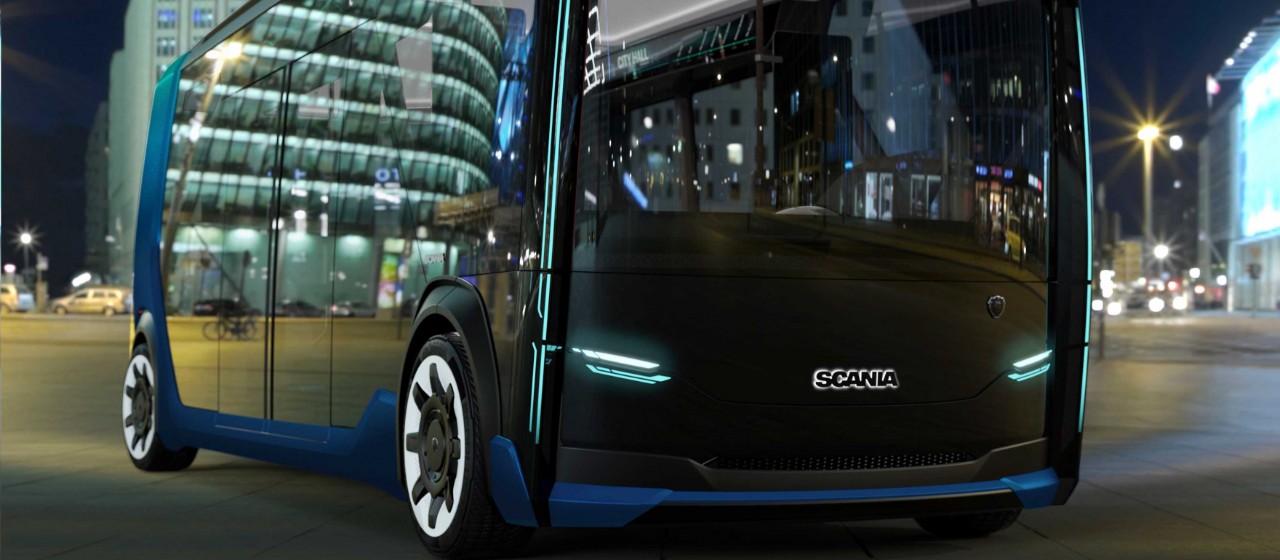
How Scania’s NXT communicates with passengers and those around
10 JUNE 2019
A key consideration with self-driving vehicles is the machine interaction with other road users, and, in the case of buses, also with passengers.
NXT is Scania’s vision of what the future for transport in cities could be. It is a self-driving electric vehicle that can change shape from a bus to a distribution truck to a refuse collector.
Communication for bus passengers
Many of the interior features in the concept vehicle’s bus module compensate for the lack for driver. Lights in the ceiling inform passengers when the vehicle is about to start or stop. NXT is also equipped with a warning system to alert those disembarking of unsafe oncoming traffic.
Upon entering, passengers can immediately see information about public transport connections and communicate with a human operator via a sphere-shaped touch pad. Information on an additional screen could include, for example, news updates or tourist recommendations and tips.
Sensor system with a 360-degree view
The autonomous concept vehicle is equipped with state-of-the-art integrated sensor systems for driving and traffic detection. Cameras on the front, back and sides are complemented by radar and lidar – light detection and ranging – systems.
“This integrated sensor system enables the vehicle to scan the entire surroundings and obtain a 360-degree view,” explains Transport Designer Michael Bedell, Scania. “At present, vehicles may fall short of human processing capacity but in future they will be superior to what humans can achieve simply because they will have access to much more information and the ability to process this mass of data.”
Warning system for surrounding pedestrians or cyclists
People in the vicinity of the vehicle will be alerted to its approach by LED lighting throughout the front, sides and back. It also confirms through lighting and sound that it is aware of a passing pedestrian or cyclist. This is done in three steps: Initially the vehicle will signal through a laser beam that it has observed the person. If that warning goes unnoticed, the vehicle will amplify LED-lighting and finally emit a sound.
“The communication between a self-driving vehicle and the people moving around it has been highlighted as especially important since many pedestrians on city streets make, what to many, is an almost an unconscious contact with drivers of trucks and buses before crossing streets,” says Bedell. “However, when that slight nod from a driver disappears, it is clear how much value that contact adds. This is something that we need to program autonomous vehicles to handle.”